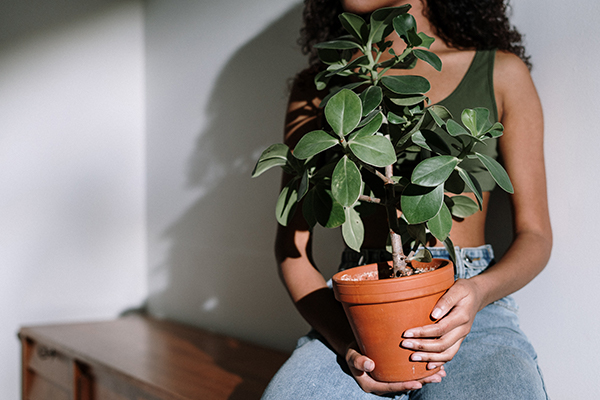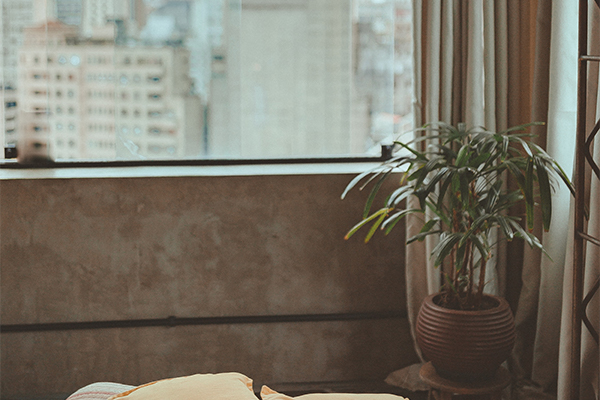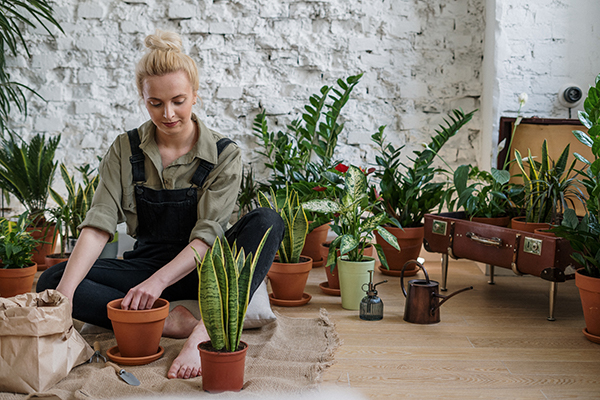Potted Plants: Bringing Them Inside for Winter!
During the golden beauty of summer days, it can be easy to forget how short the season actually is. But by bringing your potted plants inside when the weather gets cooler, you can keep on enjoying their beauty even when the snow starts to fly. If you’re in a warmer climate, you might not need to bring your plants in. But it’s a good idea to keep in mind if your area ever ends up with a cooler-than-usual winter!
Bringing In Your Potted Plants
Generally speaking, you want to bring your potted plants inside before the nighttime temperatures are below 45 F, or 7 C. However, some plants need to come in even sooner. Be aware of your plants’ individual needs and do plenty of research! Unique species usually have unique needs, so learn as much as you can about each of your potted plants. We recommend keeping a journal, and recording your potted plant’s requirements for future reference.

There are a few important steps to keep in mind to make sure your potted plants continue to thrive once their outdoor vacation has come to an end. Before you move your plants inside, plan ahead a bit. Make sure you have an appropriate space for your plants to thrive, depending on whether they need more light or shade. You may need to rearrange the furniture to accommodate your potted plants.
Keep Sunlight Exposure in Mind
A big thing to remember is that your light-loving plants will likely have less opportunity for sunshine once they move indoors. You don’t want to shock their systems. Make sure you transition them gradually. Over the course of several days, shift them progressively to more shaded spots outside before you move them inside. Be aware of how the sun travels over your yard throughout the day. Place your potted plants under trees or overhangs so that they’ll become accustomed to more indirect light. If you don’t have much outdoor space, like in an apartment, place your potted plants near balcony railings or tables to provide the same indirect light exposure.

As much as many of us hate the chore, it’s also a good idea to clean the windows where your plants will be. This will ensure they’re getting the full benefit from the sun light. Some potted plants require a lot of sun, but you might not have a space inside where they can get it. Consider buying some full-spectrum light bulbs to make sure they get the light they need. These are typically available at your local garden centre or hardware store.
Be On The Lookout for Pests and Diseases

Another important thing to keep in mind is that you don’t want to bring any bugs or plant diseases into your home. Once inside, they can spread rapidly. So before you move the potted plants indoors, be sure to check them carefully for signs of pests and disease. Do this a bit ahead of time, so you can deal with any potential issues before the temperature is too low for your plants to still be outside. The potential pests and diseases can vary depending on your location, and the potted plant variety. Once again, be sure to do your research and know what to look out for!
This is also a good time to prune any damaged leaves or blossoms. It will help your potted plants optimize their growing energy and be as healthy as possible.
Set Your Potted Plants Up For Success
Finally, the best way to make sure your plants thrive all year round is to plant them in BigYellowBag Black Garden Soil. Our soil is packed full of organic matter and essential nutrients. It’s a perfectly-balanced blend of compost, manure, black loam, and peat loam. We’ve engineered it to be the optimal growing medium for any plant. Loam is beneficial because of it’s composition. It’s the perfect ratio of sand, silt, and clay so that the soil can retain the right amount of moisture while also draining well. Grow everything better with our Black Garden Soil, including your potted plants. Some potted plant enthusiasts will amend their soil with vermiculite, or other common additions to aid in drainage. This may be beneficial to your potted plants, so be sure to do your research!
Want to learn more about potted plants? Let us know in the comments below, or suggest some other Blog topics! All the best and happy gardening!


I have a 15 yr old hibiscus which lives inside and outside each year . It needs to be trimmed back before coming inside for space reasons but there are still some flower buds on the stems which I hate to cut off. Advice pkease.
Hey Penny,
Thanks so much for your comment. That’s an old hibiscus and I’d hate to hear that any damage was done from pruning. From what I’ve read, your best practice would be to selectively prune the plant. Don’t take any more than 1/3 of the branches out, and be aware that the branches you prune will not bud for a little while. Pruning will encourage more branch growth, and improve the overall health of the bush, so don’t sweat losing a couple buds now. They’ll come back with even more buds once the branches grow out.
Hope this helps Penny and be sure to reach out with any future inquiries!
Thank you Cameron I’ll do that.